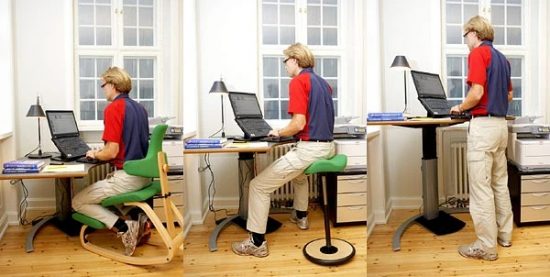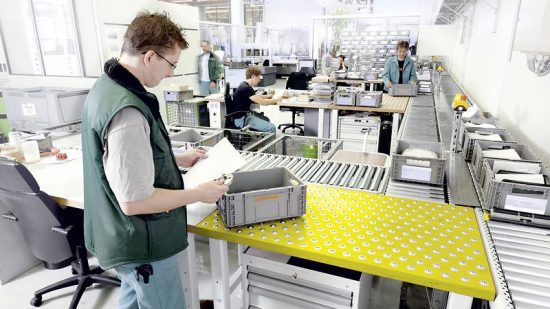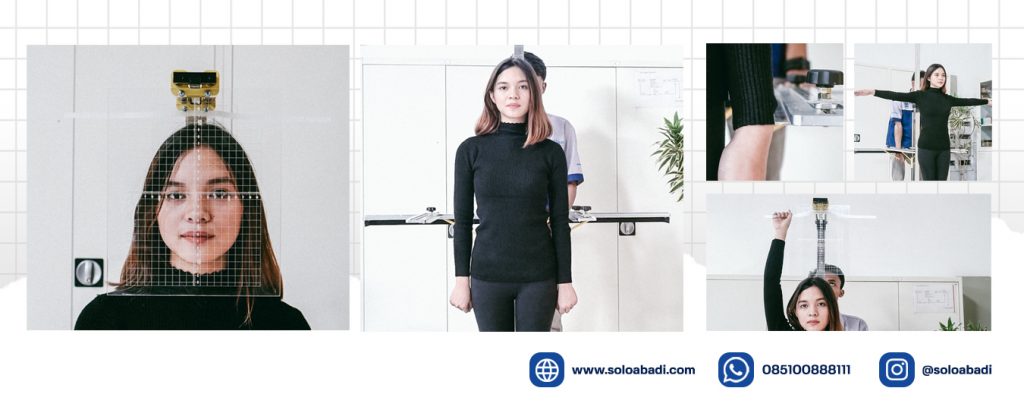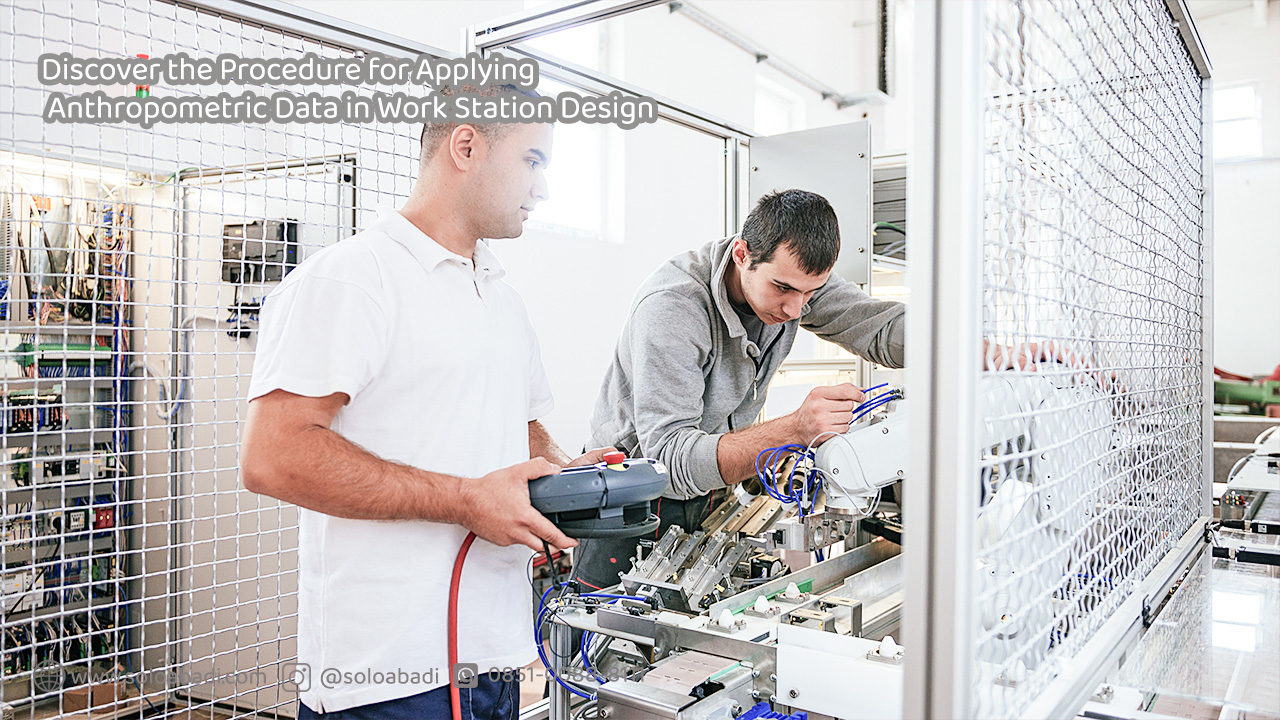There is a procedure in applying anthropometric data that can be used as a reference during the work station design process. It is known, that careful design is appropriate between the operator and the design that has been made, anthropometric measurement data is the key to achieving this suitability. Especially if the goal of design is comfort, health and productivity, a reliable designer needs to have high precision and accuracy.

The work station design itself is only one of many examples of designs that require anthropometric data kits. There are a number of other designs such as commercial products, room designs to health products. Although, collecting anthropometric data cannot be done haphazardly, there are procedures that must be followed.
This article will discuss the procedure for applying anthropometric data to various design processes. But before that, let’s discover what anthropometry is and its significance in everyday life.
About Anthropometry
The term anthropometry is adapted from the Latin namely anthropos or human and metron which means measurement. Then according to (Bridger, 1995) these two terms are further defined as measurements of the human body. Tayyari and Smith (1997) also define anthropometry as a study that is closely related to certain dimensions and physical characteristics of the human body. The dimensions include weight, volume, center of gravity, inertial properties of body segments to the strength of muscle groups.
Furthermore, anthropometry is also interpreted as having a close relationship with the design of products related to humans. This was mentioned by Sanders and McCormick (1987) that anthropometry is the measurement of body dimensions or other physical characteristics of the body that are relevant to the design of something people wear. The results of these anthropometric measurements can be used as a reference for the design of work equipment, work stations and products that are in accordance with the dimensions of the worker’s body.

This suitability will then create comfort, health and work safety for humans. The anthropometric aspect itself has been considered for centuries. For example, the user dimension has been used as a reference for making farm implements and home furnishings. However, at that time the aspects that were considered were only limited to function and aesthetics, not the metrology aspect.
Also Read : The Function of Anthropometry in Product Design
The form of the application of anthropometry can also be seen from the shape of ancient places of worship such as Greek temples. The temple was built through the collaboration of philosophers, artists and architects by paying attention to the dimensions of the human body. Since then, the anthropometric aspect has continued to develop and can be used in various fields.
Procedures for Applying Anthropometric Data to the Design Process
There are procedures that can be followed as a reference for designers when they want to apply anthropometric data to the design process. The following is the procedure for applying anthropometric data in the design process:

Anthropometric Data Application Procedure
- First, define the user population for both the design for the product and the workstation first. This is because each age group has different physical characteristics and needs. The same is true for gender, racial, ethnic, civilian or military groups.
- Determine the body dimensions that are thought to be important in the design (eg, eye height, toe height, hip width, popliteal height, etc.). For example, for the design of the entrance, the maximum height and shoulder width of the user must be considered. The seating design must accommodate the user’s hip width.
- Then select the percentage of the population to be accommodated in the design. It is impossible for a design to accommodate 100% of the user population, due to financial and economic variations and design limitations.
- For each body dimension, determine the relevant percentile value by looking at the anthropometric table. If the percentile values in the table are not available, then use the mean and standard deviation values of the dimensions of the anthropometric data.
- Make allowances for existing data if needed. Clothing is one of the factors that must be considered in making concessions. Allowances should also be made for equipment such as shoes, gloves, masks and head coverings.
- Use mock-ups or simulators to test designs. The designers need to evaluate whether the design is in accordance with the requirements or not. For this reason, you can use mock-ups or simulators to test the design by taking user samples to carry out simulations.
The above procedure can be used by the designer as a reference in measuring the dimensions of the human body for the purposes of product or work station design. Although, there are things that need to be considered besides the procedure, which are accurate and precise measuring instruments. Use accurate anthropometric measurements for maximum design results and ergonomic functionality. The following are recommendations for the best anthropometric measurement tools for product designers to work station designs.
The Most Accurate Anthropometry Measurement Tool
Metrisis – Portable Anthropometry produced by Solo Abadi Indonesia is an anthropometric measuring instrument derived from an anthropometric chair that is packaged in a portable form, so that the measuring instrument can be moved or carried anywhere easily. Befitting an innovation, portable anthropometry can be used to measure up to 100 dimensions of the human body.
The function of this tool is to carry out anthropometric measurements which are carried out carefully and prioritize data accuracy. This instrument offers measuring capability of up to 100 measurements. Besides that, its portable shape allows this tool to be used unlimited time and can be done anywhere.
Following are the details of the Anthropometry Portable Kit product :
Baca Juga : Best Price, Find Quality Ergonomic Research Tools Here!
Metrisis – Anthropometry Chair is an innovative anthropometric measurement instrument that can measure up to 34 dimensions of the human body. This measuring instrument is designed in the form of an adjustable chair to make it easier to measure in a standing, sitting position, as well as measuring facial dimensions.

Contact Us To Get Anthropometry Products
Get and order anthropometric measuring instruments at the best prices from Solo Abadi by filling in the available ask for prices. You can also connect directly via WhatsApp, we are ready to contact you soon.








